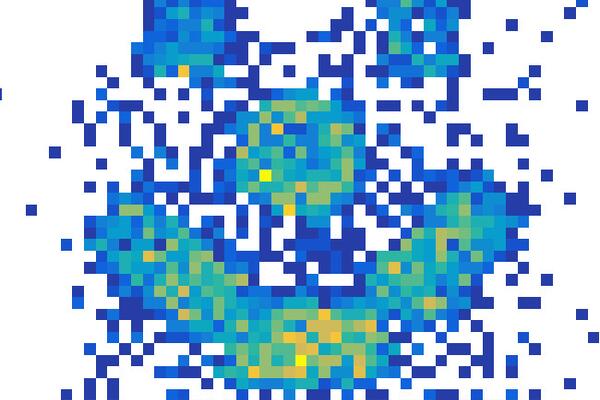Below former Queen’s University Undergraduate student and current University of Alberta MSc student Carter Garrah introduces NEWS-G’s latest (non-spherical) detector.
Introducing NEWS-G’s latest (non-spherical) detector: a Micromegas-based muon telescope!

At the end of 2019, the NEWS-G team at Queen’s University received four Micromegas (MICRO MEsh Gaseous Structure) muon detectors/trackers from CEA Paris-Saclay to be used for our own custom-designed muon telescope.

These square gaseous detectors are capable of detecting cosmic-ray muons over a 50 by 50 centimetre area. When muons ionize the gas molecules within these detectors, an intense electric field over a roughly 100 micrometre thick layer amplifies the corresponding charge signal. This signal can then be mapped to a spatial location on the detector up to a resolution of a few hundred micrometres.
At Saclay, Micromegas were used for the WatTo experiment as part of a muon telescope built for performing muon tomography (aka muography). This imaging technique is performed in the same way as with medicinal CT (computed tomography) scans, but instead of using X-rays, muography uses naturally occurring cosmic-ray muons. By aiming the telescope upwards at a target, a 2-D density image can be reconstructed based upon the number and spatial location of muons which pass through the telescope’s Micromegas detectors. This imaging technique has huge potential in the fields of geology and earth sciences, as well as archeology. Later designs of the WatTo telescope were even used as a part of the fascinating ScanPyramids mission in Cairo, Egypt during 2015 – 2017. Here, muography was used to identify a previously hidden chamber within the Great Pyramid of Giza!
At Queen’s University, it is the goal of NEWS-G to use muography to study the behaviour of muons within our SPC detectors. Over the past half-year, as an undergraduate and summer student I have designed and built the near-complete NEWS-G telescope. This massive 210cm (6.9 feet) tall structure uses a rotatable frame to allow pairs of Micromegas trackers to be placed on either side of the Queen’s lab’s S130 prototype SPC (spherical proportional counter). Once operational, the telescope will be able to record any muons which pass through it and the S130, allowing for new studies into the SPC response to cosmic-ray muons.
Currently, the telescope is going through final structural modifications and testing of its electronics and gas-circulation system before it can be used with the big sphere. Preparations are also being made for a smaller version of the rotatable frame to be used for studies with smaller SPC prototypes at Queen’s. It is also the hope of the team that once the muon-related studies with SPCs are complete that this telescope can be used for future applications beyond fundamental physics, including geological studies.

 Queen's Physics Department
Queen's Physics Department

